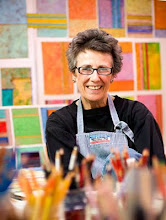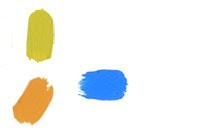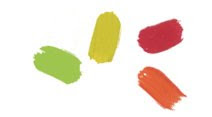When a painter begins a work with a vision in mind he/she will usually reach for the materials he has been using and which have served him well. But it often happens that the vision evolves into something else or for some other reason the artist needs to vary the materials. This situation will engender a search for whatever it is that will make the updated vision a reality. The research can take many forms; in my experience it has consisted of questions asked in the right places, books, and the blesséd internet. Then comes the testing. Putting together the vision, the materials and the experience is the challenge. The quest and discovery are part of what keeps this life endlessly engaging.
I have been corresponding this week with a friend that I graduated with long ago from The Cooper Union School of Art; we both continue to learn about the craft of art. I hope it will never end. Here is some of our exchange:
Joyce: I've started working with acrylics because the work I was doing with pastels/collage was costing too much to frame (I often work large 5-6Ft.) but I am not feeling comfortable with the acrylics and am miserable because I'm not having the pleasure and the work looks amateurish. I felt so free with the pastels.
Joan: I love pastels too and use them over acrylic (which has collage layers embedded in it) to get the intensity or color variation that I want. If you are interested in experimenting with that mixture of media, you'll need to put a transparent layer that has some tooth in it over the acrylic. Then you can use powder pastel, oil pastel, charcoal, pencil, colored pencil; the choices are many. Golden makes several mediums that might be good for the purpose. I'm using a transparent gesso (lots of tooth) by Liquitex at the moment.
P.S. I don't believe you could ever look amateurish.
Joyce: Your suggestion helps free me up from the tightness I'm feeling working with the acrylic. What do you do to hold the pastel that you've put on top of the acrylic? I don't want to have to glass the work — that's what makes the framing so expensive.
Joan: I don't think you have much of a choice there, Joyce. Even if you use a fixative (which will alter your color), the pastel surface is not strong enough to be left uncovered. I couldn't find on your web site what surface you work on, but if it's paper, that's another reason to need the frame (for support). If you want to mount without framing, you would need to mount the paper on a rigid surface or else on canvas and then on stretchers. And you still need a strong surface which would have to be covered with a removable varnish to protect it. I have done that on large pieces and they have held up well.
I am not the last word on any of the above. Our own answers might not support another’s vision. One of the best sources for answers are the technical support people at Golden Paints. They are wonderfully generous and knowledgeable and have helped me through many a quandary. I look forward to reading that Joyce has found her way happily. If any of the artists who read this blog have found solutions to the dilemmas described above, we would be grateful for your input.
You can see Joyce’s work at Joyce Silver :: Artist
The image above is Rosebay, ©2008, 36” x 48 “, Acrylic and Mixed Media on Paper














No comments:
Post a Comment